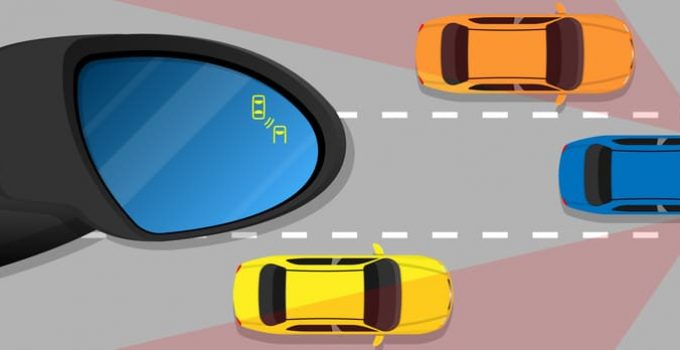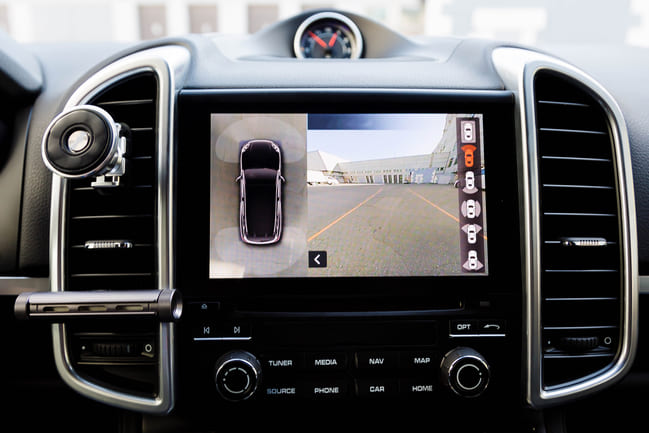
In order to be particularly safe on the road, we visit the driver's license test, attend the driving school and learn all the important rules that need to be followed in road traffic. If we comply with these regulations and also ensure that our vehicle is TÜV-approved and in a roadworthy condition, this ensures maximum safety on the roads. We use the indicator to indicate a change of direction, or we look over our shoulder and into the exterior mirror before we want to turn. However, even if all these regulations are followed, an accident can still occur.
Because there are small weaknesses in these tools. The exterior mirror can be listed here as an example. A look in the exterior mirror always reveals exactly whether a vehicle is behind the driver. However, there is a certain angle that the mirror cannot reproduce. This angle is known as the blind spot and constantly presents drivers with new challenges. There are accidents that have only happened because a vehicle driver could not see another car in the blind spot. For example, a driver takes a look in the outside mirror and sees no one there, then swerves and hits another vehicle on the side. In this case, the driver was unable to see the other car precisely because it was in the blind spot of the exterior mirror at that precise moment. So how can such a sticky situation be avoided? In general, at this point in the driving school, it is taught to always look over your shoulder and not to rely solely on looking in the outside mirror. If you want to be on the safe side, you should always remember not to forget to look over your shoulder. But are there no other alternatives to make driving safer on the road, even though there is a blind spot?

Of course there are. That's what the blind spot assistant is for. This warning system is there to outwit the peril of the outside mirror. Thanks to the development of active and passive safety systems, we are now able to use special sensors on the vehicle to warn the driver if there is a risk of a collision with an object that is in the driver's invisible area. These sensors are usually ultrasonic sensors and are mounted on the car on the side of the body and at an angle to the rear. Said sensors can now measure the distance of an obstacle or object next to or behind the vehicle. If the distance is too small, the sensors sound an alarm and can thus warn the driver who could not have guessed about the danger. The driver can now either apply the brakes, alternatively take evasive action, cancel a planned overtaking maneuver or not start at all. Numerous car accidents have already been prevented thanks to the blind spot assistant. Most modern vehicles from today's manufacturers have a blind spot assistant either ex works or optionally for an extra charge. However, if this is not the case, said assistant can also be retrofitted. There are a wide variety of devices here, which differ greatly depending on the car model and also in their quality and consequently in price. The sensors can also be attached to different parts of the car. Attachment to the substructure of the vehicle is typical here, but installation within the housing of the exterior mirrors is also common. The sensors now also include a control module, which allows the assistant to be switched on or off at this point. The module also decides whether the device will warn you with an acoustic signal or a visual signal. In most cases, however, this can also be decided by the driver and set accordingly manually.
What costs will I have to pay?
Of course, the decisive factor here is whether, when buying a new car, you opt for the optional equipment of the blind spot assistant, so that the car is manufactured directly with this device, or whether the device can be retrofitted. If said assistant is to be installed in your car as a retrofit, you can quickly expect costs of up to 3,000 euros. Although this is an expensive affair, you are much safer on the road. Alternatively, if you have manual skills, some experience and special equipment, you can venture into the work yourself. Simply buy an external blind spot assistant and mount it as desired under the body of your car or in the housing of the exterior mirrors. The decision is entirely up to you.
However, if you buy a new car and order the said assistant for an extra charge when the car is manufactured, you will get a much cheaper deal. Here you can expect extra costs of between 500 and 700 euros.
Blind Spot Mirror

But what if you don't like too much technology on the vehicle and would rather approach the problem the traditional way? For those who don't really trust the technology or don't want to spend too much money, there is still the blind spot mirror. This is a small extra mirror that is mounted above the exterior mirror. The said extra mirror now covers exactly the angle that the exterior mirror cannot cover. With a quick glance in both mirrors, the driver can now be sure that he also notices everything that is happening behind or next to him and that nothing escapes his attention.
The conclusion and a tip from CarTipsandmore
Ultimately, it can be said that rules, regulations and vigilance on the road alone cannot always ensure optimal safety. Certain tools are also needed that are used by everyone on the road today. In addition to warning lights, indicators, the right lighting and brake lights, more and more drivers are also relying on the blind spot assistant or the blind spot mirror. The former is a technical invention that uses a control module and sensors to warn the driver acoustically or visually of an object that is in the immediate vicinity. The blind spot mirror, on the other hand, is a much simpler but just as sensible solution: another extra mirror gives an insight into the corners and angles that are not visible in the conventional exterior mirror. CarTipsandmore recommends that you get information about these devices from your trusted workshop. They are used for road safety and safety always has priority.
